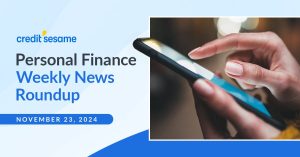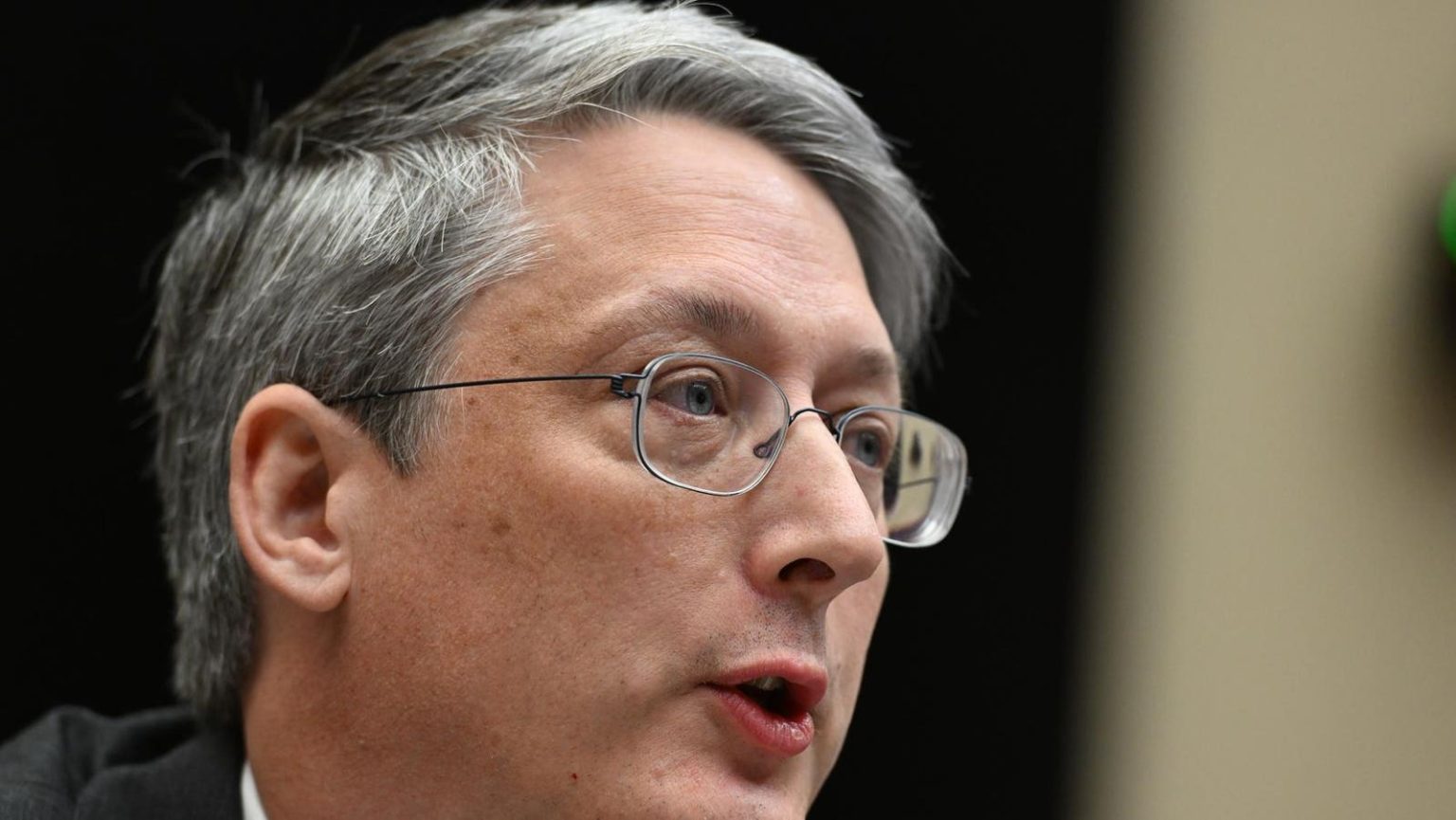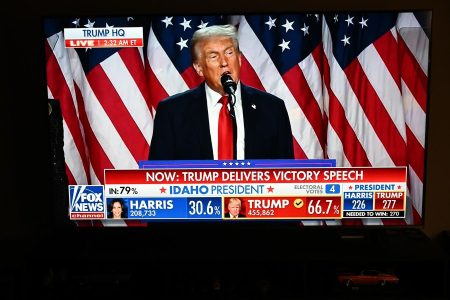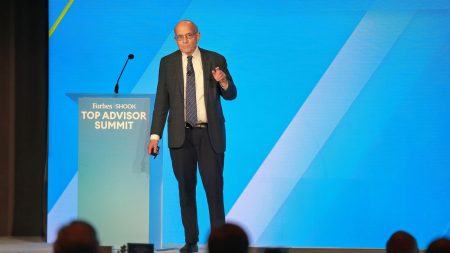The Education Department is touting a new and improved student loan forgiveness tracking system this month. The initiative is part of a broader, long-planned effort to streamline Public Service Loan Forgiveness and other loan forgiveness programs, and to make the application processes more transparent for borrowers.
“The U.S. Department of Education’s (Department) office of Federal Student Aid (FSA) is updating how borrowers manage their participation in the PSLF Program,” said U.S. Under Secretary of Education James Kvaal in a blog post last week. “These exciting changes have been in development for many years as the Department has worked to both overhaul loan servicing and implement significant improvements to its loan forgiveness programs, which include PSLF.”
Here’s a breakdown of these new improvements, and what borrowers pursuing student loan forgiveness should expect.
Student Loan Forgiveness Tracking Now Available Again For PSLF
PSLF allow borrowers to receive student loan forgiveness on their Direct federal loans after making 120 qualifying monthly payments. Borrowers most work as full-time employees for certain nonprofit or government organizations for at least 10 years while meeting other program requirements to be eligible for relief.
Previously, borrowers who had certified eligible employment periods had been able to track their qualifying PSLF payments through MOHELA, one of the Education Department’s contracted loan servicers. MOHELA took over administering the PSLF program from FedLoan Servicing. But having one servicer contracted to handle this student loan forgiveness program meant that many borrowers had to go through cumbersome and sometimes disruptive student loan servicing transfers.
One of the core features of the new improvements is PSLF tracking is now housed at StudentAid.gov. That means borrowers can monitor their student loan forgiveness progress regardless of their loan servicer, and they don’t have to transfer to a different servicer to get on track.
“For the first time, borrowers can now manage all aspects of their PSLF journey on StudentAid.gov, rather than by navigating to a servicer’s website,” said Kvaal. “Because the PSLF Program will be fully managed on StudentAid.gov, borrowers will no longer need to be transferred to a specific servicer just so they can participate in PSLF.”
Detailed Student Loan Forgiveness Data Available For Borrowers Pursuing PSLF
Borrowers who have at least one previously-processed PSLF employment certification — a form signed by the borrower and their employer to confirm a qualifying employment period — should now be able to track their student loan forgiveness progress on the new dashboard at StudentAid.gov. The information displayed includes the following:
- A PSLF progress summary, showing the total number of qualifying payments made so far, the number of qualifying payments remaining, and a projected student loan forgiveness date.
- A detailed month-by-month breakdown showing months that qualify for PSLF, months that are potentially eligible pending employment certification, and months that are ineligible for loan forgiveness.
- A list of confirmed PSLF employment periods, including details on when specific employment certification forms were submitted by the borrower.
“With these new updates, borrowers can now also track their progress toward PSLF on StudentAid.gov after their form is processed, rather than by navigating to a servicer’s website to access this important information,” said Kvaal. “Borrowers who are working toward PSLF can now see their eligible and qualified payments on StudentAid.gov, a totally new functionality that will streamline and consolidate the process.”
Borrowers Encouraged To Submit Employment Certifications To Get On Track For Student Loan Forgiveness
In order to “count” qualifying payments toward PSLF, borrowers must submit a PSLF employment certification form. The Education Department encourages borrowers to use the PSLF Help Tool, a separate online system that allows the borrower and their employer to complete the form electronically. Borrowers are strongly encouraged to use this digital process, rather than submitting a paper form, as there is less room for error, and processing will likely be faster. And the PSLF Help Tool is now integrated with the new PSLF tracking system at StudentAid.gov.
“Borrowers can continue to use the PSLF Help Tool—which was enhanced last spring to include digital signature and submission functionality for faster processing—to submit their PSLF forms,” said Kvaal. “Once a form is submitted, borrowers can continue to track its progress using their dashboard on StudentAid.gov, where they can see if their form has been signed by their employer or processed. Most borrowers will also now experience faster processing of complete PSLF forms due to additional automation of processing.”
However, the Education Department is currently focused on processing PSLF employment certifications that were submitted prior to May 2024, when the system was put on pause during the transition to StudentAid.gov. Once the department has completed processing these earlier submissions, officials will begin processing PSLF forms submitted during and after the pause, which ended on July 1.
Nearly 1 Million Borrowers Approved For Student Loan Forgiveness So Far Under PSLF
Almost a million borrowers have been approved for student loan forgiveness under the PSLF program since 2021, according to the Biden administration.
“Since the start of the Biden-Harris Administration, over 942,000 public service workers have received the $68 billion in relief they are entitled to under the bipartisan Public Service Loan Forgiveness Program (PSLF),” said Kvaal in his blog post. “Prior to the Biden Administration, only 7,000 people in total had received debt forgiveness through PSLF.”
The PSLF program was enacted through bipartisan legislation in 2007, but many borrowers struggled to navigate the program’s complexities. Poor loan servicing practices and inadequate oversight contributed to low approval rates, according to borrower advocates.
The more recent approvals represent a 100-fold increase in success rates for borrowers. And now that PSLF processing has resumed, those approvals should continue increasing. However, some Republicans are now calling for the program to be repealed, arguing it unfairly benefits high-income earners, even though borrowers who work in nonprofit or government jobs typically earn less than their private-sector peers.
Other Student Loan Forgiveness Programs Set For Improvements
The Education Department plans on streamlining other federal student loan forgiveness programs, as well, by similarly integrating them into StudentAid.gov.
“We’re making changes to streamline your federal student loan and grant web experience,” said the Education Department in an announcement earlier this year. “These changes will eventually allow you to fully manage your federal student loans and grants on StudentAid.gov,” regardless of the borrower’s specific loan servicer. “The first changes started in March 2024, and the rest will happen in stages over the next few years.”
The department is expected to next focus on the Total and Permanent Disability discharge program, a loan forgiveness program geared towards borrowers who are unable to maintain substantial, gainful employment due to a medical impairment.
Read the full article here










